Above: The shape-shifter Peruvian God Ai Apaec, in his octopus form. Gods and Monsters exist world-wide, from time immemorial. This writer, Made Victor of Bali, spends a lot of time thinking about Gods and Monsters — not the ones in Heaven and Hell, but the real ones. The writer has scoured the earth to present here supernatural beings who are endlessly uplifitng; or who just add a little fun to your day – take for example, witches. Made Victor contemplates the life and times of witches as they have lived among us forever, and do fantastics things. For example, in Medieval France, the good English overlords feared Joan of Arc, as she was a very successful witch. They fixed her French beeswax for being a visionary and military genius! She was burned at the stake. Was Joan of Arc really a witch or was she a visionary over-achiever? Maybe. Here is an article from this website on this exact topic.
Mystical Visionary or Psychotic? – You Decide
January, 2023 by Made Victor (the Bali name of writer Zephyr Carlyle) For those who are riled up, please put down the torches and pitchforks. Any discussion of witches nowadays is clouded by disinformation and fake news. Plus, witches notoriously have bad P.R. For example, witches do not fly around on brooms looking to suck out your soul, or eat your children. No, that’s what demons do, although historically witches have used brooms for transportation, as noted below. True, witches can be evil and follow black magic. Yet, witches, ancient or modern, can be good and use white magic. Way back when, witches were upstanding citizens, at least in some areas: “Witches were once considered valuable members of their communities. The community relied on their knowledge of the natural world to mix medicines, cast out evil spirits, deliver babies, and help crops grow. For the last task, ancient witches straddled brooms and bounded through fields, believing the year’s crops would grow to the height of their highest leaps. Brooms have been linked to witch transportation ever since. “https://kids.nationalgeographic.com/pages/article/monster-myths.
Below is a little witch quiz with two potential witches. Which one is the real witch?
Below: No, this is not a real witch. She does not exist, except in the memories of people old enough to know the movie, “The Wizard of Oz.” Who remembers when this movie could only be seen on television just once a year? That one TV night was a big deal in kid land. Every child was sure to be home and — spoiler alert! — watch the Witch of the West and all her beautiful wickedness melt away. Sigh.
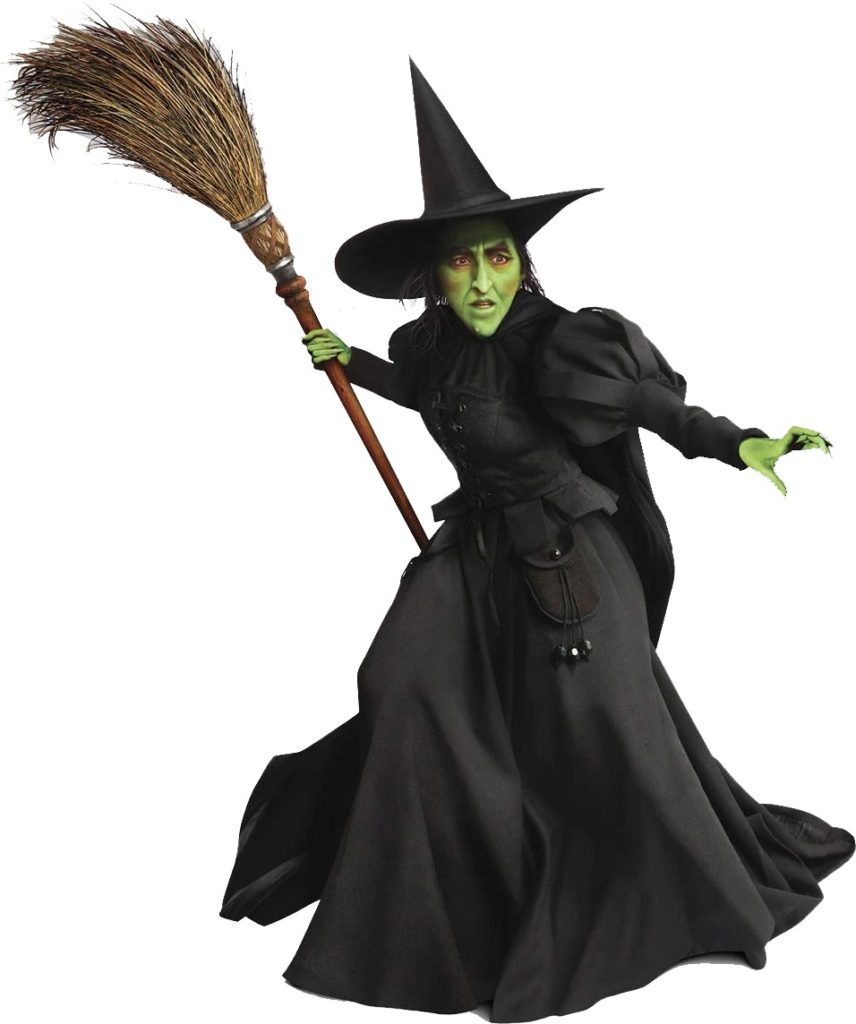
Below: Yes, this is a real witch. Now we’re talking! Check out below for this genuine good witch, Aradia.
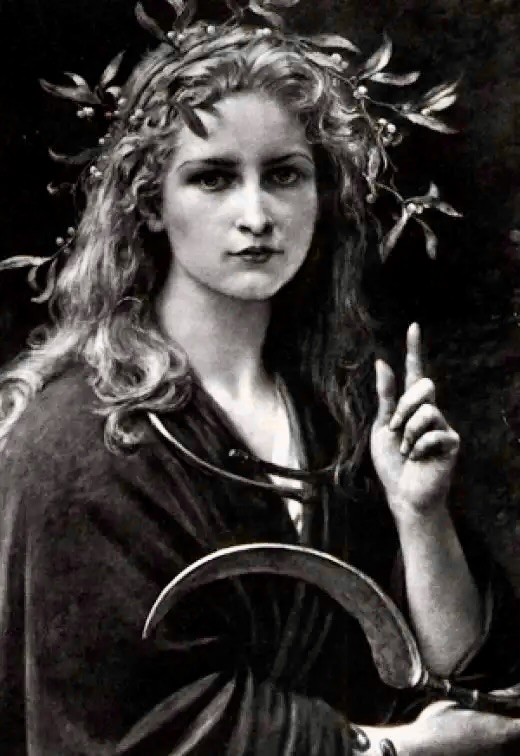
Aradia of Italy
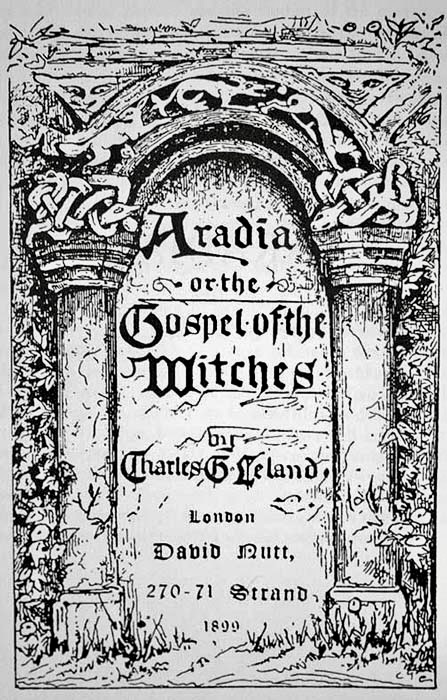
Aradia, a witch on the move, is intertwined with the modern Wiccan movement. One famous ritual attributed to Aradia is set out in the book, “Ritual of Diana, Goddess of Witches” Published in 1916. The book describes how witches invoked and worshipped her while looking for love and good health. Aradia became famous in England and America from the 1921 book, “The Witch Cult in Western Europe.” This book argues that Aradia was an incarnation of Diana who had come into the world on the eve of the Christian era to teach witches how to worship Diana. Taken from: https://teaandrosemary.com/famous-witches-in-history/
Yeah, Yeah, That’s All Fine and Good. The Point Is…..
…. that Gods and Monsters are everywhere and have universal appeal, or dread, or both. Such supernatural beings exist on many levels both real and surreal. By real, witches really exist everywhere; not only in literature and movies, but on the streets where you live. The surreal means they live in a realm beyond conscious awareness, as well as in your inner most psyche. Witches or other monsters can be part of those vague sensations you remember from the dream state; those uncomfortable feelings that create a slow drip of inner anguish. The original plan for this article was to tease out all these interrelated cosmic sensations that connects us to both Gods and Monster. The article would explore the supernatural urges of our own creation, and those Divine revelations passed down through our tribal heritage. But….
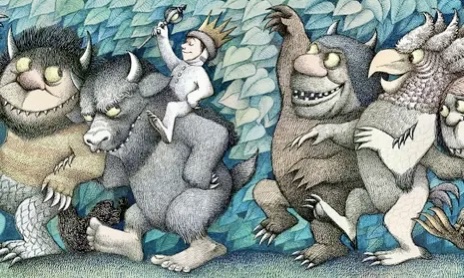
… Naah, that’s too heavy and it is too early in the year. Now is the time to have fun with Gods and Monsters.
Three Continents, Three Gods
Gods and monsters are busy. They have work time, and then down time; lives and loves; wins and losses. They symbolize the sacred essence of creation, but some live the life of a profane mortal. Meanwhile, here are the resumes of some of the oddest Gods from around the world: Ai Apaec of Peru; the paralyzed Tuhavi and Blind Mudhead combo from Hopiland, U.S.A.; and Amun Min of Egypt.
Ai Apaec of Peru
Many people think of the Incas as the main ancient civilization of Peru, and greater South America. However, the Incas were just the last wave in a series of succeeding empires. For example, in northern Peru the Moche ruled supreme between 100 and 800 A.D., long before the Incas finally arrived. The Moche chief God was the ultimate shape shifter: Ai Apaec. He changes shape to travel through the different worlds here on earth Ai Apaec takes on different forms when traveling on the ground, in the sky, and through the oceans. He must travel in all direction in order to ensure the continuation of nature’s cycles, represented by the changing seasons of the year. That sounds very uplifting, but Ai Aepaec is also known as the “Decapitator.” During human sacrifices, prisoners were decapitated and their heads given up to Ai Apaec.
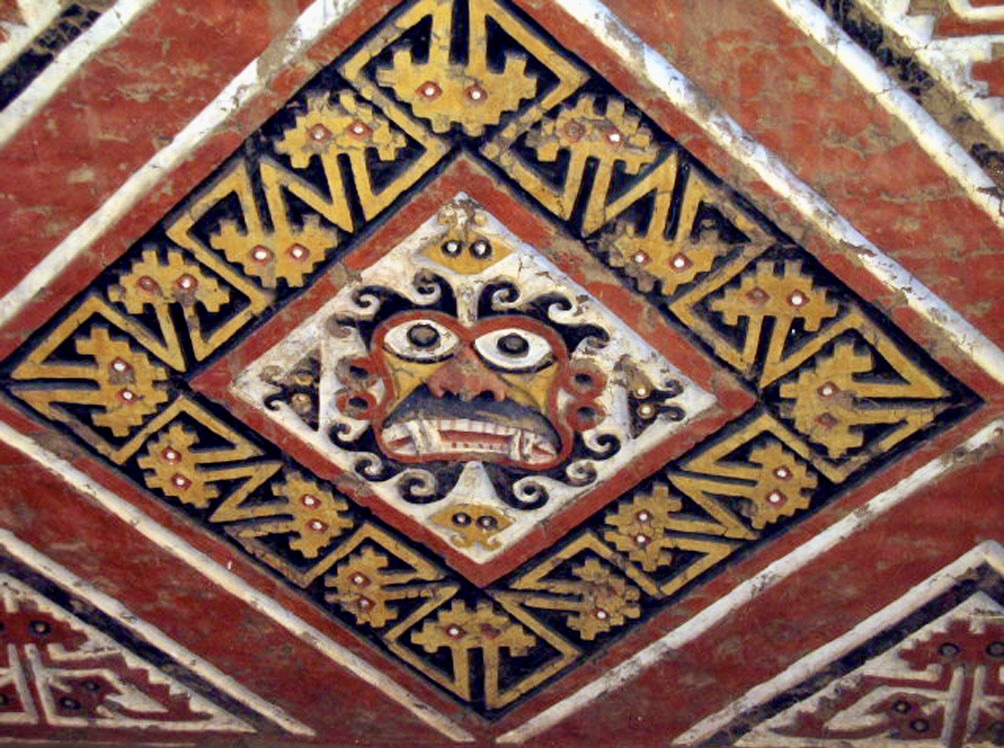
The most common representation of Ai Apaec is the one seen left in the murals of the Moche Temples of the Sun and the Moon which present a humanoid face with feline fangs, surrounded by ocean waves.
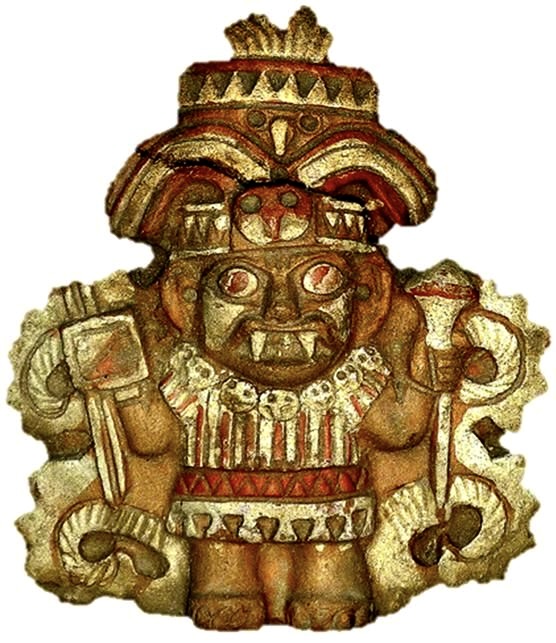
Yet, Ai Apaec was represented in many other ways also, depending on the period, place, and medium used. In metallurgy, for example, Ai apaec is often seen as a spider with eight legs and an human-like face, often with jaguar fangs. In ceramics, Ai Apaec is more humanoid; usually holding his head in his hands, but sometimes with two snakes sprouting from his head. In sculpture, he is shown with a staff. Ai Apaec makes up for this softer side with his horrible aquatic forms in which he is a terrifying crab or. octopus.
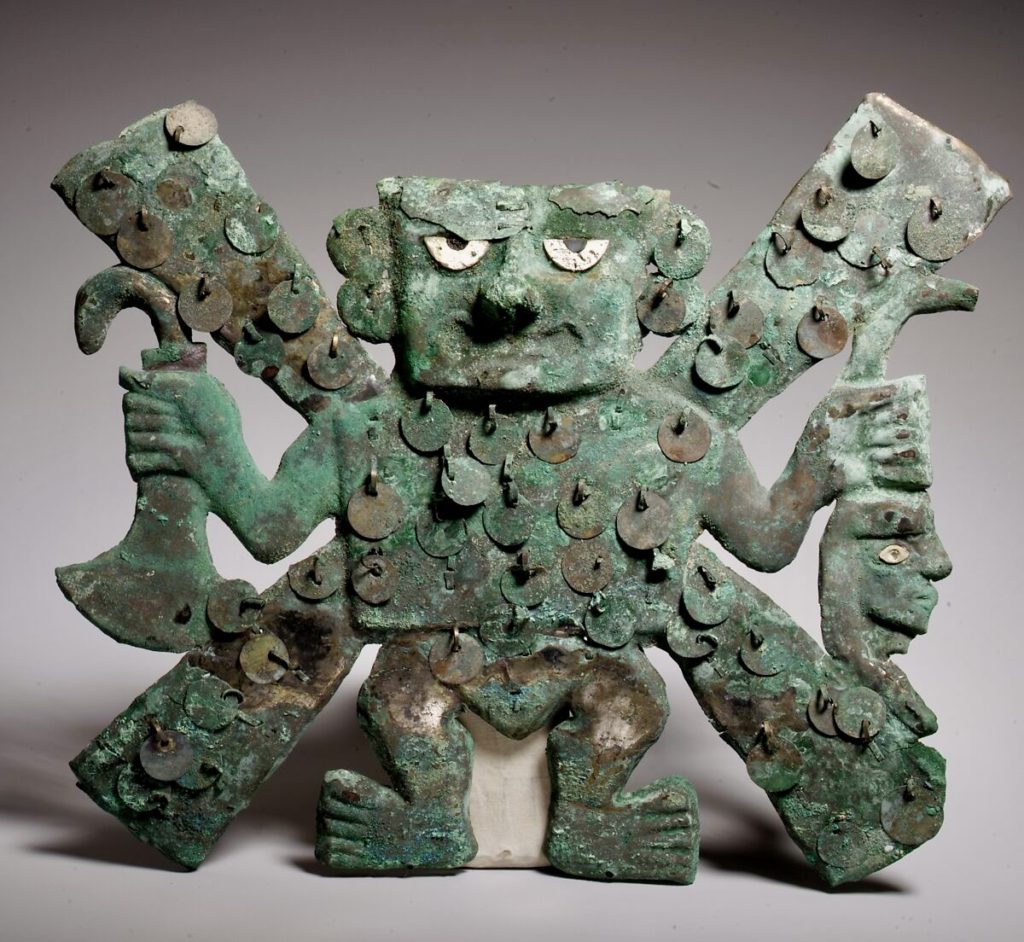
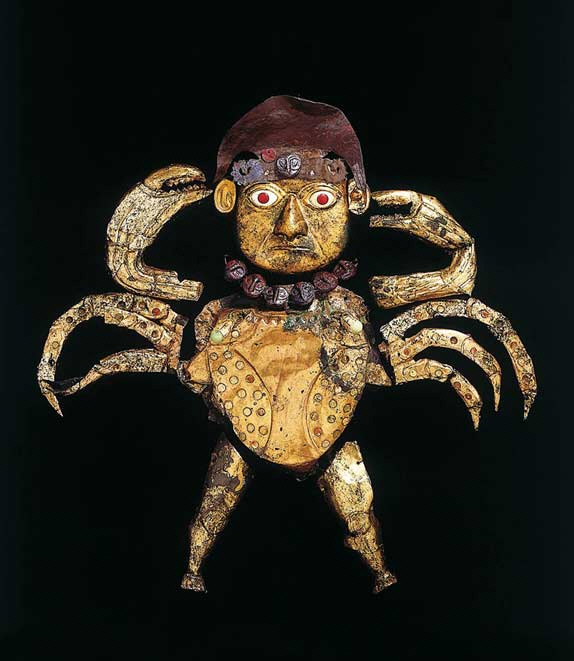
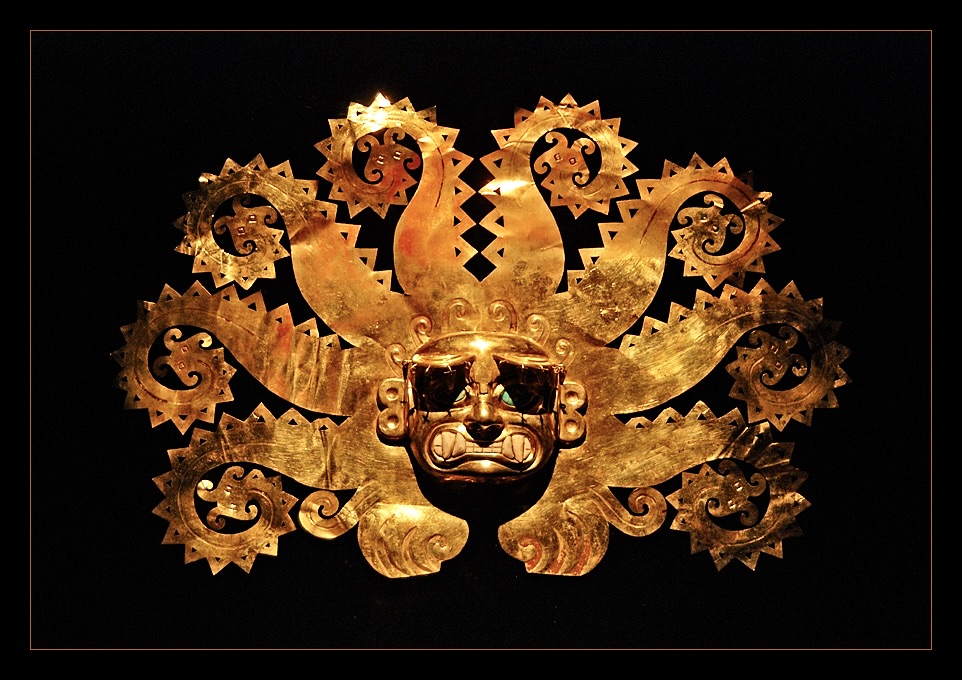
Tuhavi and Blind Mudhead – Hopi Kachinas of the U.S.A.
The Hopi are a Pueblo Indian tribe that live in northern Arizona, U.S.A, not far from the Grand Canyon and the town of Flagstaff. With 13,000 enrolled members, this tribe is a fairly isolated community that retains a lot of their traditional ways of life. One continuing custom is the use of Kachina dolls The Hopis still carve these sacred dolls that represent their all-important Kachina spirits that guide their daily life. These dolls are both toys and sacred objects. The kachinas are given to children as play things that are also used to teach the ancient ways. Kachinas are carved out of a single piece of root from the revered cottonwood tree. If you like, listen to this Hopi song of the Mudheads as you read this section:
bbb
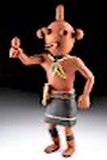
Kachinas are supernatural beings who live in the mountains, the San Francisco Peaks, near Flagstaff, Arizona. The Kachinas guide the Hopis to live in peace and follow the ways of the Gods. For a few months of the year, they come and live among the Hopi in their mesa top communities. Hopi men embody the Kachina so these spirits can, in full costume and regalia, appear at Hopi ceremonies. The Kachina ceremonial season is between the December Winter Solstice and mid-July. Hundreds of Kachinas exist including the Tuhavi, discussed here. Some Kachinas are fearsome, others are awe-inspiring. Yet, a few types of Kachinas are playful, such as the Mudheads. These clown Kachinas will drum, dance, or play games with the audience, and may act as announcers for events. The Mudheads sometimes give prizes or rewards for village races and guessing games that they organize. The ceremonies with Kachinas are not public events, but outsiders can observe at a short distance. NO photos or videos are allowed. Therefore, photographs of the Kachina dolls, readily available for sale, are the best we can present here.
;;;;;
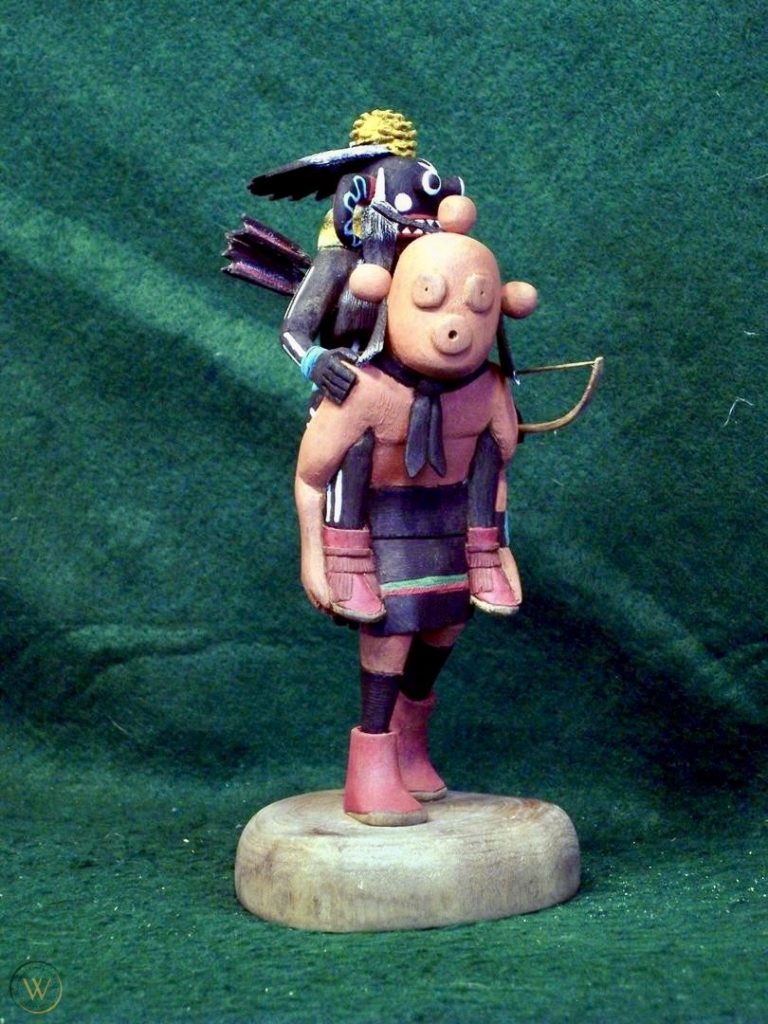
According to oral tradition, Tuhavi, the paralyzed Kachina was carried by his blind friend, a Mudhead. Together they were able to hunt, travel, and accomplish many tasks. After their very long sojourn among the Hopi, everyone met at the the Home Going Ceremony, an all-Kachina event, a goodbye-until-next-year, farewell Ceremony. During this Ceremony, the other Kachinas showed appreciation for the dynamic duo, and both were healed by ember sparks from a sacred fire.
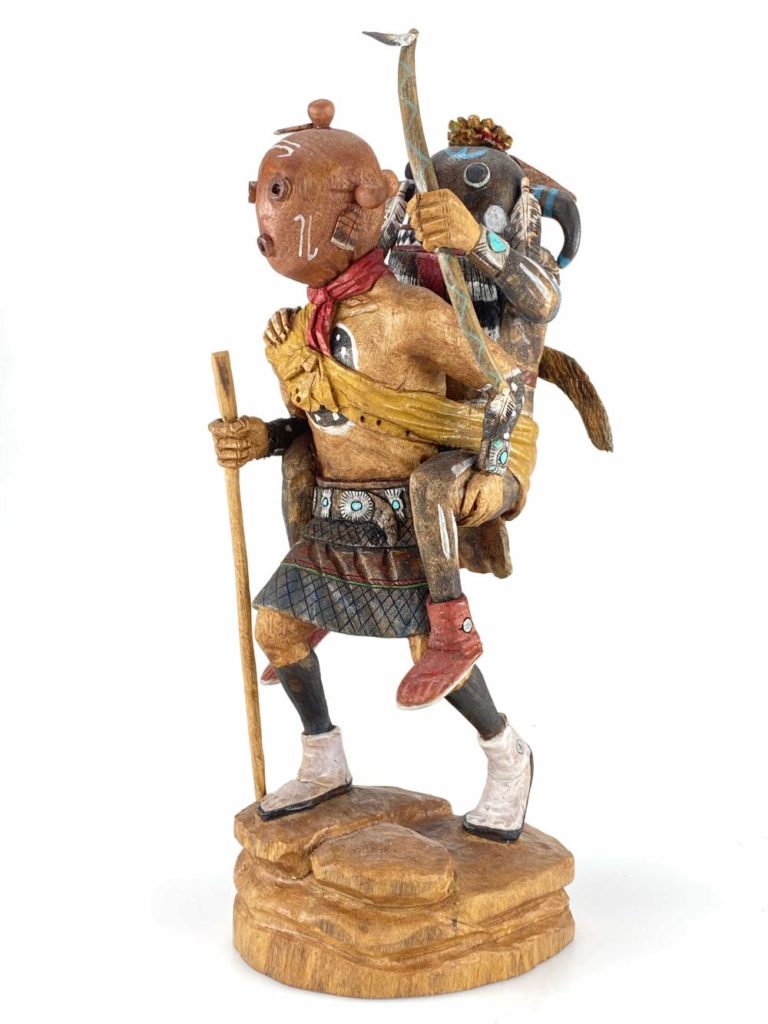
Amun Min of Egypt
The ancient Egyptians had many, many Gods. Their stories were not fixed in time and space. Over the millennia, the Gods moved locations and job descriptions — their stories overlapped and collided. New God forms emerged from the swirl of Egyptian cosmology and others faded away. Such was the case of Min. He started out life early, like around 4,000 B.C., before any Egyptian dynasty even existed. Min was a little regional God of fertility and had an annual street procession. His sacred plant was lettuce. However, over time, this story grew legs. Min took off and became a player in the Egyptian God pantheon. Min finally became a major deity when his story fused together with the cult of Amun, the sun symbol. Thus he was worshipped as the more all-encompassing Amun Min, a God of Sun and Fertility.
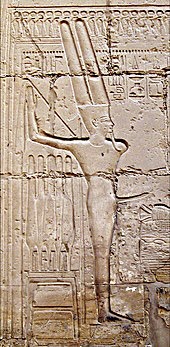
According to Wikiedia, “Min (god)”: ”Min (Egyptian mnw[1]) is an ancient Egyptian god of fertility whose cult originated in the predynastic period (4th millennium BCE).[2] He was most often represented in male human form, shown with an erect penis which he holds in his right hand and an upheld left arm holding a flail.….. One feature of Min worship was the wild prickly lettuce … which is an aphrodisiac and produces a milky secretion when cut, possibly identified with semen.” (lightly edited for clarity).
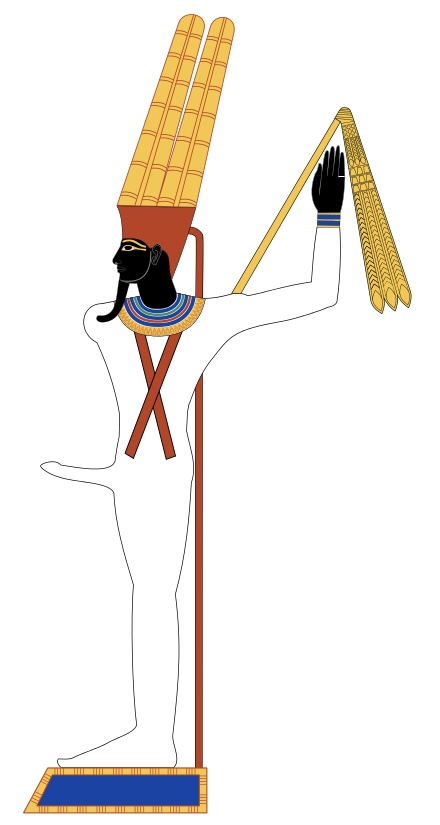
Why is Amun Min is alway depicted with only one arm and one leg? Min’s story is set out in mythcrafts.com: “Once there was a king, and he and all his men were called out to fight a war. All of them left their wives at home, with only a single man to guard them, Min. When the king and his men returned months later they were surprised to find all their wives with child. The king called for Min and demanded to know how all the women became pregnant, and Min just shrugged his shoulders and said he didn’t know, so the king cut off his arm as punishment. The following year the men were once again called out to war, and Min was once again left to guard all the women. When the men returned, they were furious to find all the women pregnant again. The king called for Min and demanded he tell him what happened. Again, Min just shrugged and said he didn’t know, so the king had Min’s leg removed. The third year, war broke out once again and Min was left behind with all the women. When the King returned to find that yet again all the women were pregnant he had Min hauled in front of him to explain, and again Min just shrugged and said he didn’t know. The King told his men to seize Min and to remove his penis as punishment, but as the guards tore his clothes from his body and saw how huge Min’s phallus was, they decided to make him a god instead and that’s how he became Amun Min.” https://mythcrafts.com/2016/11/26/424/
You are invited to join us as a member of Temples ‘n’ Tribes, a travelogue and literary journal. Subscription members get notice of the latest postings sent straight to their email inbox. The journal creator Made Victor posts about three new articles a month. And your email or other information will NEVER be sold or used in any way. Sign up for a free subscription below:
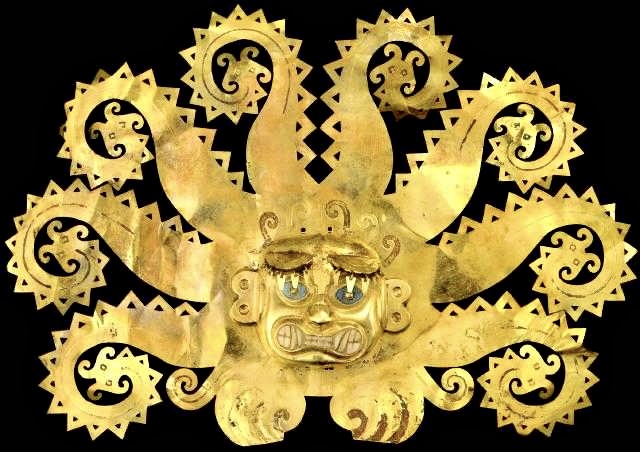
Interesting….!!
Although I have only skimmed, I love this article. THANKS!